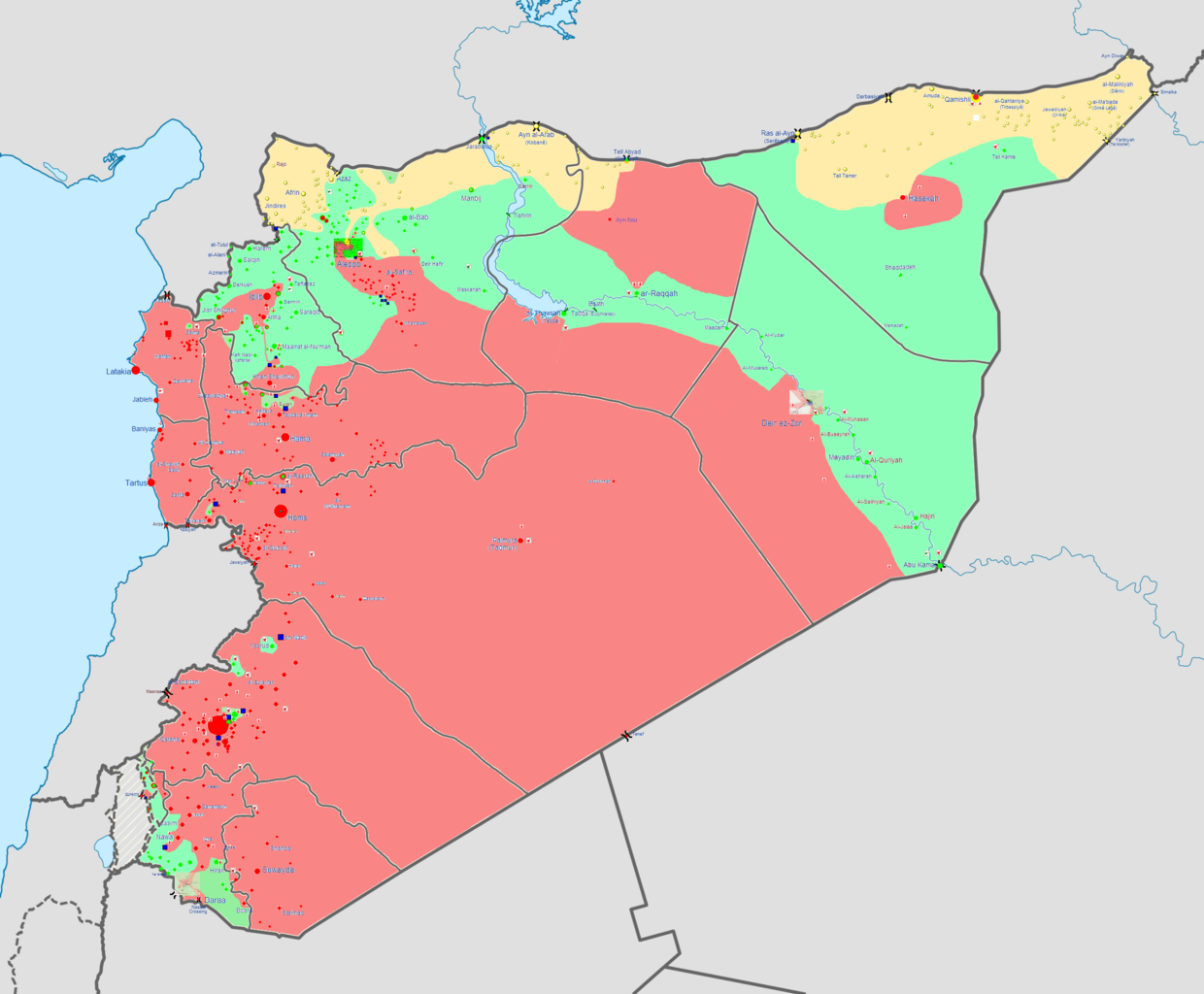The Impact of Geography on Politics in the Syrian Negotiations I

Renas Sino
December 8, 2017
Geopolitics traditionally involves the study of the effects of geography on politics and power relationships. That study is the analysis of the geographic features of a particular land - particularly climate, topography, arable land, access to the sea, resources and location- and their effects on politics, with a view of the political endeavor to take advantage of these characteristics and features according to a strategic perspective.
The concept of geopolitics has evolved over the past century to include broader connotations, but it traditionally refers to causal relationships between political power and geographical space within specific conditions. It is often considered as a set of standards of strategic thinking and includes specific attributes based on the relative significance of land power and naval power in the world’s history.
Since the era of Hafez al-Assad- a Syrian statesman, politician, and general who served as President of Syria from 1971 to 2000- the Assad regime has realized the geopolitical importance of Syria, and has brilliantly adopted a policy of outstretched hands. This policy has enabled the regime to enter Lebanon, and through investment in the Palestinian issue during the war, to facilitate exchanges between the Assad regime and Israel. Furthermore, the Assad regime has always found success in this game by extorting the regional environment through the use of its tools, whether it is toward Iraq, Turkey, or Jordan. It has also managed to drain the Arab Gulf States’ funds and inclinations.
Given how the conflict in Syria has developed over the course of the war, we realize that the geopolitical ploy, long utilized by the Assad regime, is almost over at the regional level. The goal is to now move inward, with the regime bringing its struggle with its opponents to the national level. Each party has established, through their military and political allies, a geographical area on the ground in Syria to negotiate from and build their strategy in the region for decades to come. The reason that Syria is of such great importance has nothing to do with its natural resources, but rather its significant geographical location. The country plays a critical role in destabilizing or creating stability in the region, which has made it an arena for conflict between various forces.
Geopolitics will have a direct and significant impact on the next phase of the conflict, which could be called the Syrian Cold War. This new cold war has arisen between international and regional actors, particularly the United States and Russia. The Assad regime and its allies currently control 44.8% of the geography in Syria, more than 83,000 square kilometers. The Syrian Democratic Forces (SDF (controls 42,000 square kilometers (22.8% of the territory of Syria).
While the percentage of lands controlled by Hay'at Tahrir al-Sham (an active Salafist jihadist militant group involved in the Syrian Civil War) and the Turkistan Islamic Party in Syria (the Syrian branch of the Turkistan Islamic Party which is an armed Uyghur Salafist jihadist group with a presence in the Syrian Civil War) in addition to groups of jihadist fighters has declined to 16.5% (more than 30,600 square kilometers).

Moreover, the percentage of lands controlled by ISIS has also decreased to roughly 15.8%, or about 29,300 square kilometers of Syria’s territory.
As for the Euphrates armed groups and the Turkish armed forces, they control an area of more than 2,250 square kilometers (1.22% of Syrian territory). While, according to the Syrian Observatory for Human Rights, the US-backed and Western-backed armed groups in the Syrian Desert (Badiyat al-Sham in Arabic) control an area of 3,550 square kilometers (1.91% of Syrian territory) extending out from the al-Tanf crossing on the Iraqi-Syrian border.
Given the power distribution map, we notice a great change in the balance of power on the ground. The Assad regime and its allies have expanded their control to include half of all Syrian land, including the coastal zones and a few oil fields located in the city of Deir al-Zor. Meanwhile, the SDF and its allies have become the party with the second largest influence on the ground after they seized large areas that had previously been under ISIS control. Opposition armed groups, however, have seen their control on the ground decrease significantly.
At this point, geopolitical uncertainty has almost been resolved, in spite of some escalation that usually accompanies each round of negotiations. The stage of re-establishing authority, as well as political power, over the geographical space has begun. This stage utilizes tools and action mechanisms that are different to previous times. The Negotiation files will gain greater power as issues around the constitution and elections baskets begin to arise. In order to stay current and participate effectively in this stage, new political action tools must be developed and implemented.



